There are many exotic and very interesting plants. But perhaps one of the most surprising among them is sundew... This carnivorous plant is quite undemanding to care for and can be safely grown at home.
Many have probably heard of such a very unusual plant, but few have seen it live in the wild. At the moment, there is an opportunity to grow a sundew in your apartment in a simple flower pot, which cannot but please lovers of exotic vegetation.
This plant feeds on insects. On the surface of its leaves there is a large number of cilia, on the tips of which tiny droplets of sticky juice flaunt, which are very similar to dew (which is why the plant was named so). Small insects after touching the leaf stick to it. After that, the sheet is folded. Sundew juice contains paralyzing alkaloids, as well as enzymes (they contribute to the softening of chitin, and also due to them the insect is digested). In this unusual way, this plant feeds, receiving the necessary minerals. Dewdrop is slow in growth, and it can also live for many years (several tens).
This plant can be grown in your apartment. You can not only admire its unusual properties, but also get rid of annoying insects.
Sundew (Drosera) is a herbaceous plant that is directly related to the Droseraceae family. It is very undemanding and can grow in almost any conditions. So, it can be found on sandy slopes, and in swamps and in mountainous areas.
The leaves, collected in a basal rosette, in this unusual plant have an oblong or rounded shape, and they are also sessile or petiolar. The cilia can be pale green, red, or brownish yellow.
There are no sticky drops on the sundew flowers, and they are placed on rather long peduncles. Therefore, insects can pollinate them freely. In more species, the flowers open only when the sun is shining and turn to follow it. The diameter of the flower is usually one and a half centimeters, but it can reach three or even four centimeters.
The roots of this flower are very weak. Their purpose is to absorb water and keep the plant itself in the ground. And it takes all the nutrients necessary for growth and development from insects.
Those plants that are found in temperate climates have a pronounced dormant period, which is observed in winter. They hibernate under a snow cover. The same species that are found in the subtropics grow all year round.And the species of sundew growing in Australia have a tuberous thickening under the soil and this allows them to survive droughts.
Content
Sundew care at home
Illumination
This is a fairly light-loving plant, but it may well live in a shaded place. In more species, in the shade, the foliage turns green, and in the sun it turns into a rich yellow-red color.
How to water and moisture
It is necessary to ensure that the earth is always moist. The Australian tuberous species tolerate complete drying out of the earthy coma. If there is not enough water, then the production of droplets located at the tips of the cilia will stop and, as a result, the plant will not be able to receive the necessary nutrients, since it will not be able to catch insects.
It is recommended to water the sundew by periodically immersing the flower pot in a container of water.
Top dressing
There is no need to feed.
Earth mix
Some kind of special dredge is not needed for sundews. Experienced growers advise that it contains sphagnum moss, sand and perlite.
Transfer
There is no need to transplant. However, this procedure may be required if the substrate is silted up or has lost its looseness.
Reproduction methods
There are a large number of self-pollinated species of sundew. Often, their flowers self-pollinate during closing. A lot of black tiny seeds ripen. You can buy seeds via the Internet, and it will not be difficult to grow a plant from them. Sowing is carried out in a moistened substrate, while the seeds should be right at the very surface (or on it). The container with seeds must be covered with glass or foil. Place it in a well-lit place. Watering is recommended by immersing the container in a bowl of water. The first shoots may appear 2–5 weeks after sowing.
You can also propagate the sundew by children that grow from the roots. It is also quite possible to root old leaves of an adult plant.
Types of sundew with photo
Round-leaved sundew (Drosera rotundifolia)
Found in the Northern Hemisphere in temperate zones. Prefers to grow in swamps. Its rounded, small (1–2 centimeters) leaves are placed on long petioles. In shape, they are very similar to a plate, covered with a lot of hairs on top.
Spatula sundew (Drosera spatulata)
It is very similar to a flower in diameter, which is 4 centimeters. It has green or red spoon-shaped leaves, the surface of which is covered with small cilia. In a sunny place near the sundew, the leaves are painted reddish, and in a shady place, green. This plant is extremely hardy and undemanding to care for. Its flowers are pink or white.
Cape sundew (Drosera capensis)
This is one of the most beautiful views. It has a short stem, to which many linear thin leaves are attached, located on a narrow petiole. The foliage is colored brown-red or yellow-green, and the cilia are colored red. When an insect hits a leaf, it quickly coils into a roll. The flowers of this plant are quite beautiful.


Watch this video on YouTube

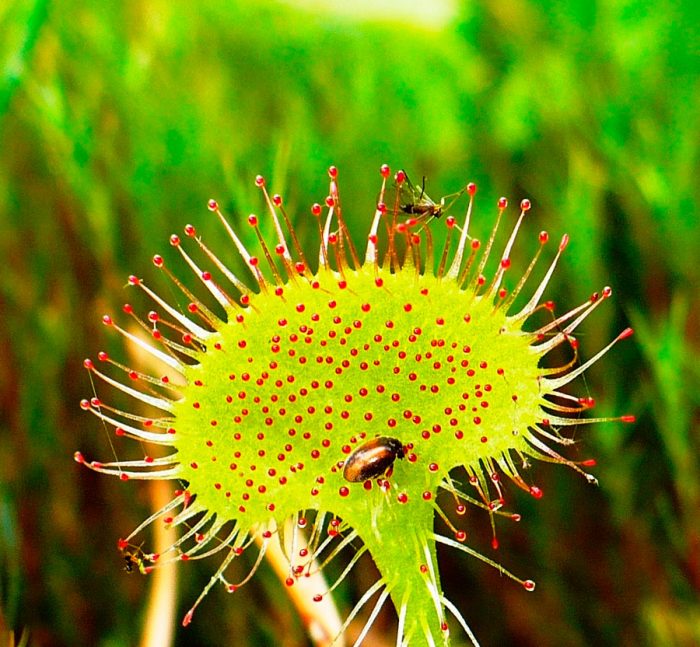
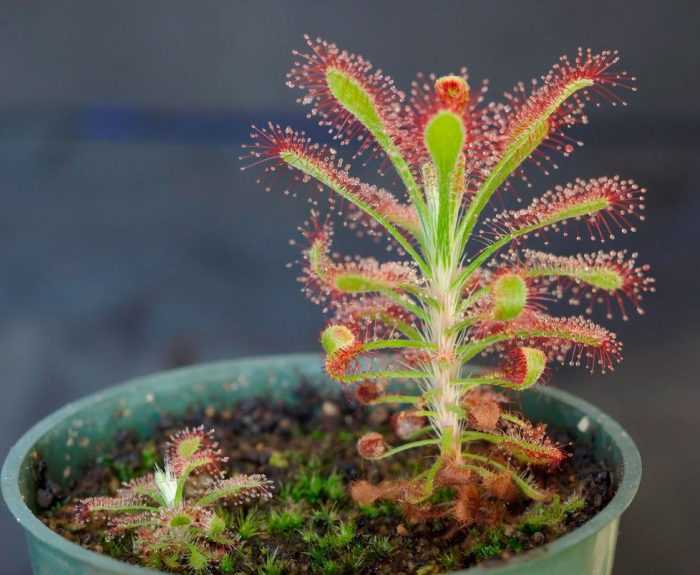
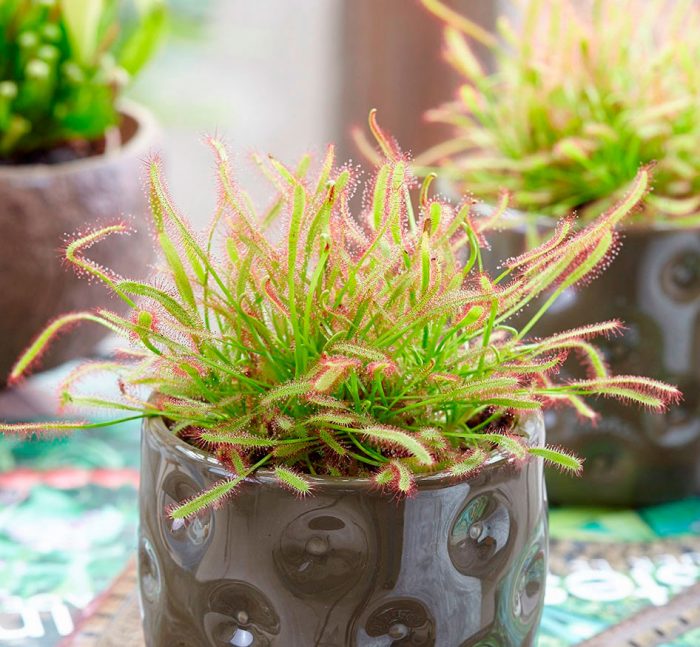
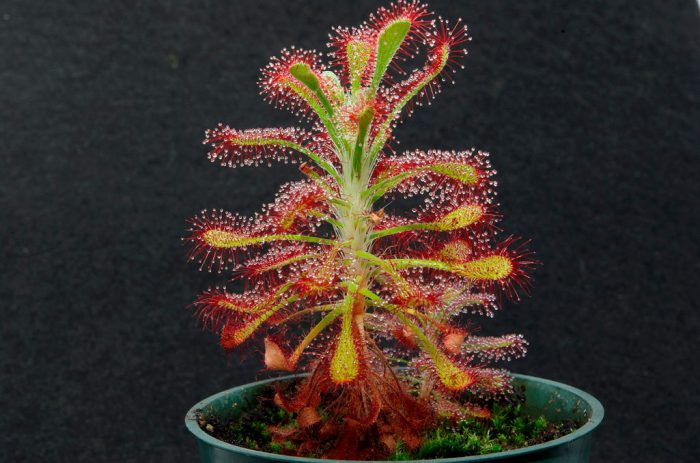

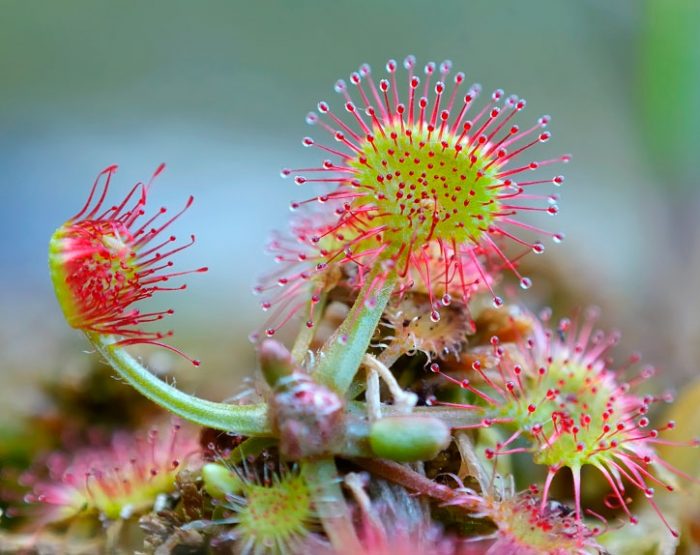
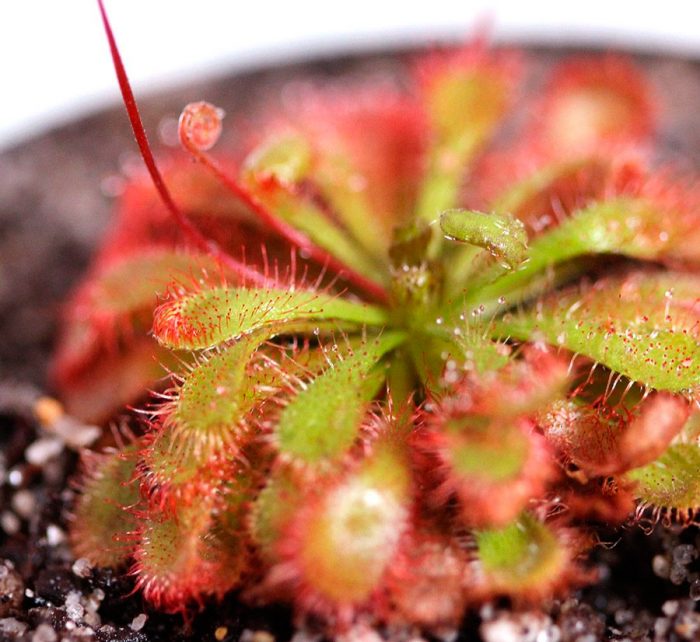
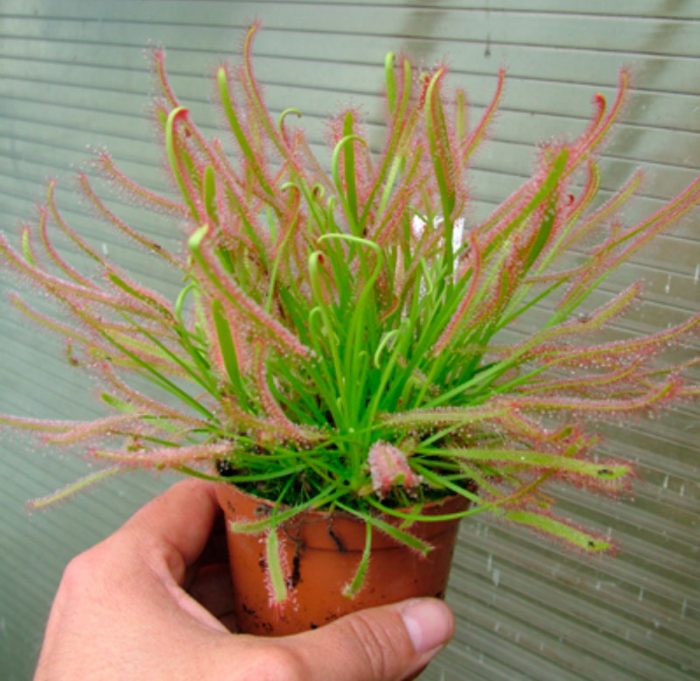
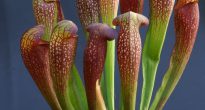
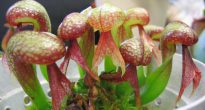
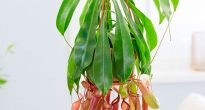
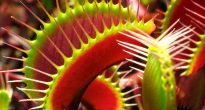

How many insects does she need?